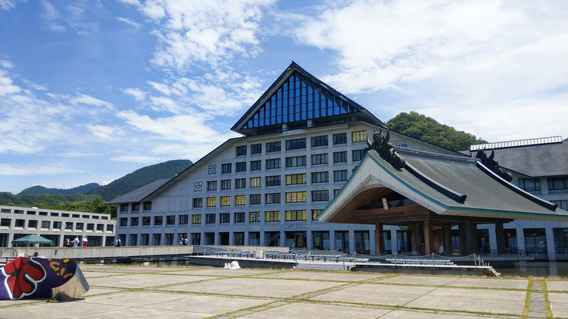
R
E
V N
E
X
T
As universities around the world shift to online teaching alternatives due to Covid-19, some art schools in Japan have announced plans to reimburse students.
According to Bijutsu Techo, Kyoto University of Art and Design, which has been conducting virtual classes since April 9 and keeping its campus shut until at least May 6, announced on April 23 that it will refund 77 percent of its facility maintenance fees from April to May. Students from each department will receive varying amounts based on specific programs and usage of onsite facilities such as its woodworking studio Ultra Factory, ranging from JPY 14,000 to 46,000 (USD 130 to 430) per person. In Yamagata prefecture, Tohoku University of Art and Design has set up a “self-study assisting fund” equivalent to the amount of facility maintenance fee from April to June, with each student due to receive JPY 30,300 to 32,400 (USD 282 to 302) in June. The school plans to continue with online teaching until at least June because “more than 70% of the students are from other prefectures and most of the staff are teaching remotely in Tokyo,” according to a statement on its website dated April 24.
Meanwhile, students from other Japanese art universities including Tokyo University of the Arts, Musashino Art University, Tama University of Arts, Joshibi College of Art and Design, and Tokyo Zokei University, among others, have created individual student-led campaigns in demand of partial refunds of educational fees. A separate campaign for all universities across the country, with a letter addressed to prime minister Shinzo Abe urging for the reduction of tuitions by half, has garnered more than 9,000 signatures on Change.org by time of writing.
Aside from art institutions, universities in general have launched initiatives to aid students through the Covid-19 crisis, including the reduction of tuition fees, the extension of payment periods, and the establishment of scholarships and funds. Waseda University in Tokyo, which runs art history programs, has established an emergency fund totaling JPY 500 million (USD 4.68 million), according to its April 24 announcement. Keio University and Hiroshima University have also stated that they will provide JPY 15,000 to 30,000 (USD 140 to 280) for each student in need.
Outside of Japan, 52 universities in Thailand, including Thammasat University and Chulalongkorn University, which both provide art programs, reduced their enrolment fees and extended payment periods, according to The Nation Thailand. In Hong Kong, Chinese University of Hong Kong, which has a department of fine art, has postponed its tuition payment deadline for the second semester until further notice. The National University of Singapore, which also has an art history program, announced on April 24 that it plans to create several hundred full-time and paid traineeship positions for the graduating class of 2020 within the university.
Pamela Wong is ArtAsiaPacific’s assistant editor.
To read more of ArtAsiaPacific’s articles, visit our Digital Library.













